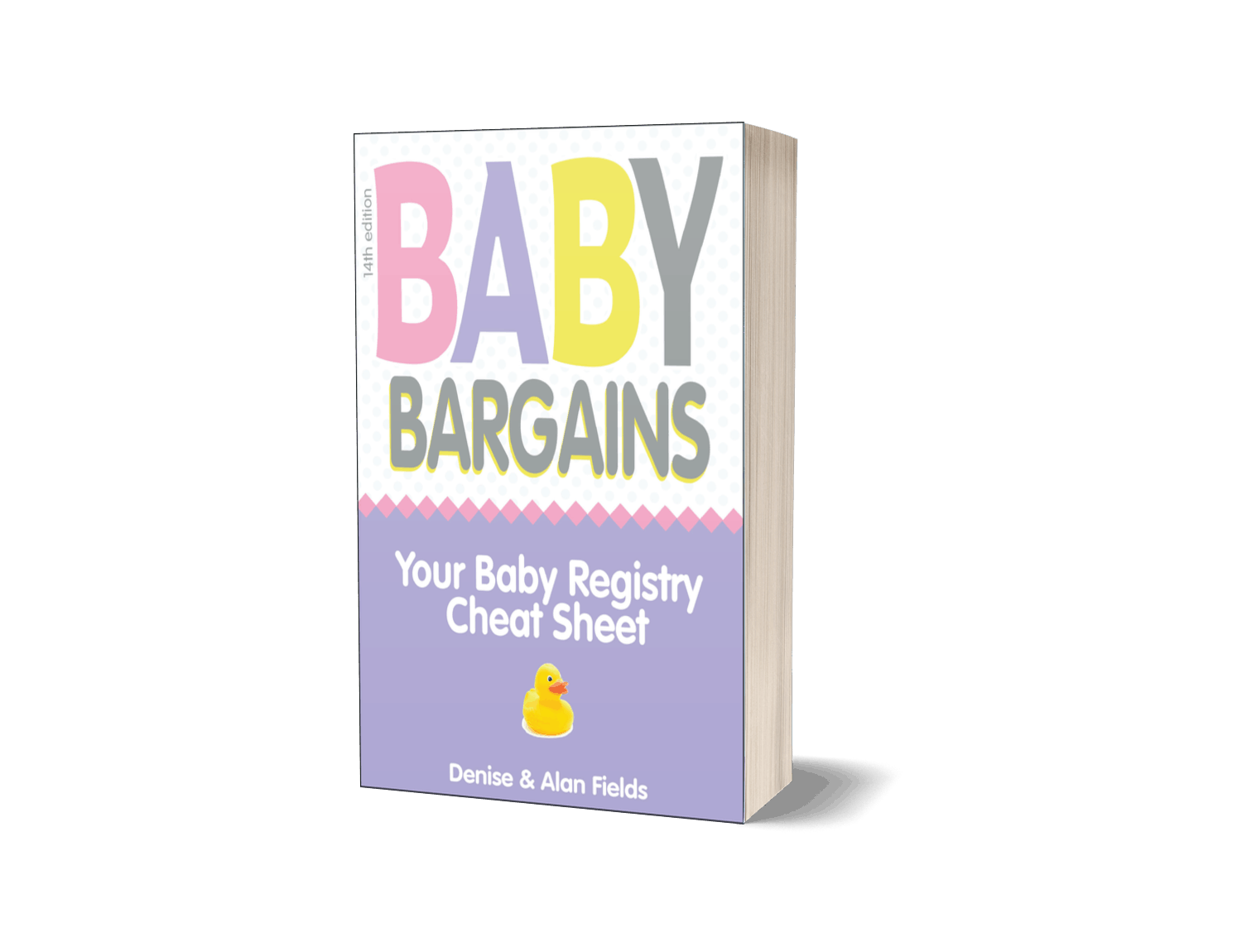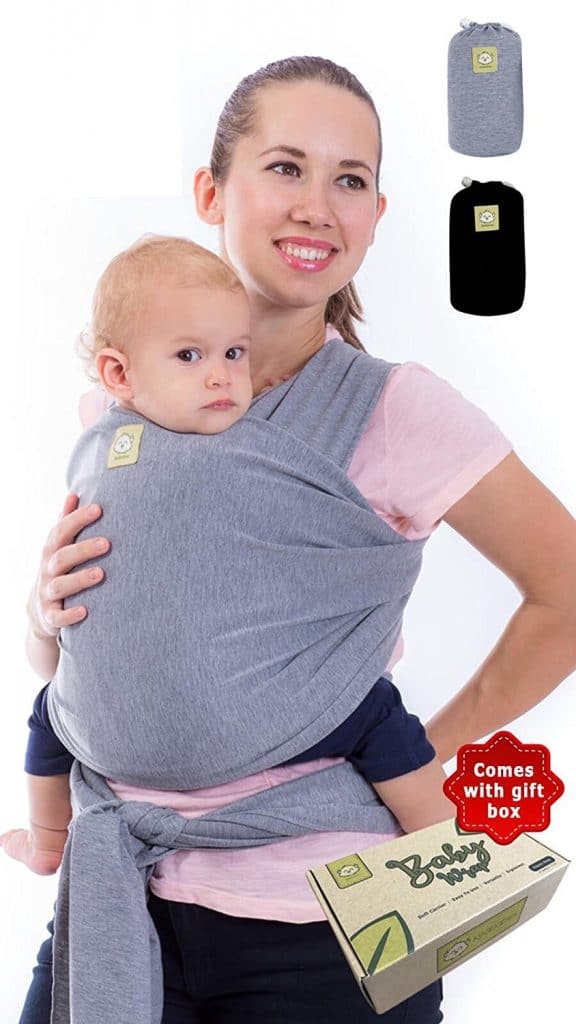
The Best Wrap Carrier 2025
Best Wrap Carrier 2025
Last Updated: . The Best Wrap 2025. We road-tested 13 different wrap baby carriers before crowning the winner: the Baby Wrap Carrier by KeaBabies ($26.96 ) is our choice for best wrap carrier thanks to overall comfort and front and back carrying flexibility.
New to shopping for a baby carrier? Read our 7 Things No One Tells You About Buying a Baby Carrier for advice and tips.
KeaBabies gets its name from a New Zealand Alpine Parrot called a Kea, hence the parrot logo on the carrier’s box.
KeaBabies’ Wrap Carrier is made from a blended fabric of 95% cotton, 5% spandex. The claim: it has “just the right stretch” to secure your baby and still give you excellent back support. One size fits all and the company notes that bigger moms and dads can tie the waist straps in back rather than bringing them around to the front.
After evaluating more than a dozen wrap carriers that can top $100, the KeaBabies’ Wrap Carrier wins not only in comfort but also affordability. At only $26.96 , this is the least expensive wrap on the market. This affordable price makes it easy to take a chance on trying a wrap carrier since your investment is minimal.
The real star here is the fabric—it’s both soft, yet stretchy. Compared to other wrap carriers we tested, the KeaBabies’ Wrap Carrier hits that sweet spot—stretchy enough to fit baby snugly, but not too stretchy.
What’s not to like? Well, like all wrap carriers, there is a bit of a learning curve to the KeaBabies’ Wrap Carrier. Fortunately, that’s what YouTube is for! And the company has detailed instructions online as well.
Another small negative: KeaBabies doesn’t disclose where the carrier is made or the origin of the fabric. We can guess the answers (China and China), but it would be nice they were a bit more transparent. Example: there is a minimum weight (7 lbs) but not maximum weight.
Bottom line: the Baby Wrap Carrier by KeaBabies is an excellent carrier that tops the competition in comfort and flexibility. At this price, it is a great value.
The Best Wrap Carrier
KeaBabies Wrap Carrier
We love this wrap carrier, which features a fabric with less stretchiness than other wraps—that keeps baby’s weight from straining your back and shoulders. Bonus: it is also one of the more affordable wraps sold today.
Why Trust Us
We’ve been rating and reviewing baby carriers since 2005. In addition to hands on testing, we have combed the research about reliability, ease of use and comfort. We also evaluate consumer reviews posted on sites like Amazon, as well as our own message boards.
Here’s another key point: we don’t take money from the brands we review. No free samples, no sponsors, no “partnerships.” Baby Bargains is your independent and unbiased source for expert baby gear reviews. We’ve been writing and reviewing baby gear since 1994. Yes, that long!
How we picked a winner
We evaluate wrap carriers with in-depth inspections, checking models for overall quality and ease of use—for example, testing real babies of different sizes and weights on parents who are equally diverse.
We also gather significant reader feedback (our book, Baby Bargains has over 1 million copies in print), tracking reader experiences with baby carriers. Besides interviewing parents, we also regularly talk with retailers to see which brands are most trustworthy and other key quality metrics.
7 Things No One Tells You About Buying A Baby Carrier!
1. Wait! There are THAT many different types of carriers?
Do you want a soft structured carrier? For infants or extended use? What about slings? What the heck is a Mei Tai? A rum-based drink from Hawaii?
Ok, let’s take a deep breath. Carriers come in a variety of types. Let’s review:
• Front carriers (AKA Soft Structured Carriers or SSC) are the most well-known and popular of all the carrier types. The 800-pound gorilla in this category is the Baby Bjorn, which is Sweden’s most successful export since ABBA.
Front carriers basically are designed like a fabric pouch worn on your chest with straps connecting at the shoulders and waist with buckles or snaps. These type of carriers are made for infants up to around 30 pounds although some hybrids like the Boba 4G can carry older kids up to 45 lbs. Nowadays, soft structured carriers are more flexible, allowing baby to be carried on your back and hip as well as in front.
• A sub category of front carriers is the mei tai (meh dai), or Asian carrier. Inspired by carriers used in Asia (particularly China), mei tais have an unstructured body and are tied on rather than buckled. This allows for infinite adjustment.
• Slings and pouches (which are unstructured carriers) have been around for centuries. These carriers are basically pockets of fabric that can be adjusted with a ring or velcro. Babies can recline in slings or sit upright once they’re old enough. Most slings and pouches are only rated up to 35 lbs., so they are more appropriate for infants.
• Wrap around carriers are one long piece of cloth that is twisted and folded to create a pouch for baby. Typically the fabric has some stretch to it. This type of carrier has the steepest learning curve for parents. Most designs are intended for smaller, younger babies up to 35 lbs.
Wrapsody’s Breeze baby wrap is lightweight and can be easily adjusted to fit anyone.
• Backpack or frame carriers are designed for hiking with lightweight aluminum frames, high quality waterproof fabrics and ergonomically designed straps. Many include sunshades, lots of storage and adjustable seating as baby grows. Here's an example from Deuter:
2. Think about how long you envision using a carrier.
The most common baby carriers (Baby Bjorn Original, for example) are designed for use up 25 lbs. The average boy would reach this weight around 18 months (girls a few months after that). Other carriers aim for extended use, up to 30 or even 45 pounds (that’s a three or four old). Our advice: there is no right or wrong answer to this question. Perhaps you only envision using a carrier in baby's first year. If extended baby wearing is something you’d like to try, you’ll need to focus on brands with higher weight limits, like ERGObaby, Boba, Beco and so on.
3. Just because you love a carrier doesn’t mean you baby will.
That's right—some babies can be darn right fussy about carriers. Your baby may love carrier A but hate style B, so hang on to your receipt (or buy from a source with a good return policy). Every baby is different, so a carrier that works for your sister-in-law may induce screaming fits from your baby. Some moms actually buy a couple types of carriers to see what works, then return the ones that don’t.
4. Baby wearing looks simple, but be aware of these key safety precautions.
Back in 2010, the Consumer Product Safety Commission issued these baby wearing tips:
- Premature infants and those with low birth weight (under 7 lbs., including twins or infants with breathing issues such as a cold) should not be placed in a sling.
- Make sure the infant’s face is not covered and can be seat at all times regardless of the type of carrier you’re using.
- Frequently check on your baby to make sure he is breathing.
Check the graphic to see how to correctly and incorrectly wear your baby:
5. Some carriers have a steep learning curve.
An example: wraps. These long pieces of fabric need to be wrapped surprisingly tight to keep baby in the proper position and support a parent’s back. This can take some practice.
Yes, slings are the easiest carrier to use, but still may require a little practice. Make sure you read the directions, watch instructional videos online and practice before you try your carrier with an actual baby. The first few times, you may want to have a second person handy to help you get all the adjustments correct.
6. Cheap carriers come with a hidden cost.
Yes, there are $15 baby carriers at discount stores. What’s the difference between this and our recommended carriers, which run about $150-$200?
A truth about carriers: a cheap carrier is no bargain if it hurts your back or is uncomfortably hot. And sadly, those $15 carriers score low on parent happiness, according to the many interviews we've done over the years with parents.
When purchasing a carrier, investing more money buys comfort and ease of use. For example, the fabric is softer when you spend more and the padding is thicker. Often hook and loop closures are industrial strength (Velcro vs. Aplix, for example) with more pricey carriers.
Deluxe slings may come with padded side rails and more expensive back pack carriers may have toddler stirrups to help older kids sit up comfortably.
7. Optional accessories are often worth the price.
Drool bibs that attach to carrier, sunshades for backpack carriers, extra long straps to fit a spouse—all worthy extras! One of our faves: teething pads for the ERGObaby carriers. Love ‘em.
Organic fabric certifications: it's more than just a label
There are three international organizations that test and certify textiles. These are OEKO-TEX, Global Organic Textile Standard (GOTS) and IVN Naturextil. All three of these certifications are optional—there is no legal standard for organic, non-allergenic, chemical free textiles in the US. Many of the companies that are certified are European, with only a few US brands certified. Here’s a bit about each of the three organizations.
1. OEKO-TEX is a German organization that offers a Standard 100 certification program for textiles at all steps in the manufacturing process. Here’s a direct quote from the Oeko-Tex web site:
“Products marked with the label ‘Confidence in textiles (Standard 100)’ provide effective protection against allergenic substances, formaldehyde, heavy metals such as nickel or for example forbidden plasticizers (phthalates) in baby textiles.”
OEKO-TEX offers a second certification called Green by OEKO-TEX, which means the “materials (were) tested for harmful substances,” the product was “made in environmentally friendly facilities” and it was “made in safe and socially responsible workplaces.”
2. GOTS (Global Organic Textile Standard) certifies textiles as organic. To meet their qualifications, “Only textile products that contain a minimum of 70% organic fibres can become GOTS certified. All chemical inputs such as dyestuffs and auxiliaries used must meet certain environmental and toxicological criteria. The choice of accessories is limited in accordance with ecological aspects as well. A functional waste water treatment plant is mandatory for any wet-processing unit involved and all processors must comply with minimum social criteria.” Basically, beyond using organic materials, companies must also be socially responsible to their workers and the community.
3. Textile Exchange. Previously referred to as the Organic Exchange (OE) Standard, the international Textile Exchange certifies textiles according to their Organic Content Standard (OCS). They verify the steps in the supply chain to make certain the materials used in end products like diapers are sustainably sourced/grown, processed and manufactured.
There are only a few carrier manufacturers we can find with one of these international certifications. These companies typically sell both conventionally grown textiles as well as organic, so you’ll need to refer to specific organic models to get certified textiles:
- Baby K’Tan (GOTS)]
- Beco (GOTS)
- Boba (OEKO-TEX and GOTS)
- Ergobaby (OEKO-TEX)
- Moby (OCS)
- Mountain Buggy (OEKO-TEX)
- Tula (OEKO-TEX)
- Claim to be organic with no info on certification: ZoloWear, Lillebaby, and Stokke
Reviews of Wrap Carriers
The Best Wrap Carrier
KeaBabies Wrap Carrier
We love this wrap carrier, which features a fabric with less stretchiness than other wraps—that keeps baby’s weight from straining your back and shoulders. Bonus: it is also one of the more affordable wraps sold today.

BabyBargains.com is a participant in the Amazon Services LLC Associates Program, an affiliate advertising program designed to provide a means for sites to earn advertising fees by advertising and linking to Amazon.com and its related sites. As an Amazon Associate, I earn from qualifying purchases.

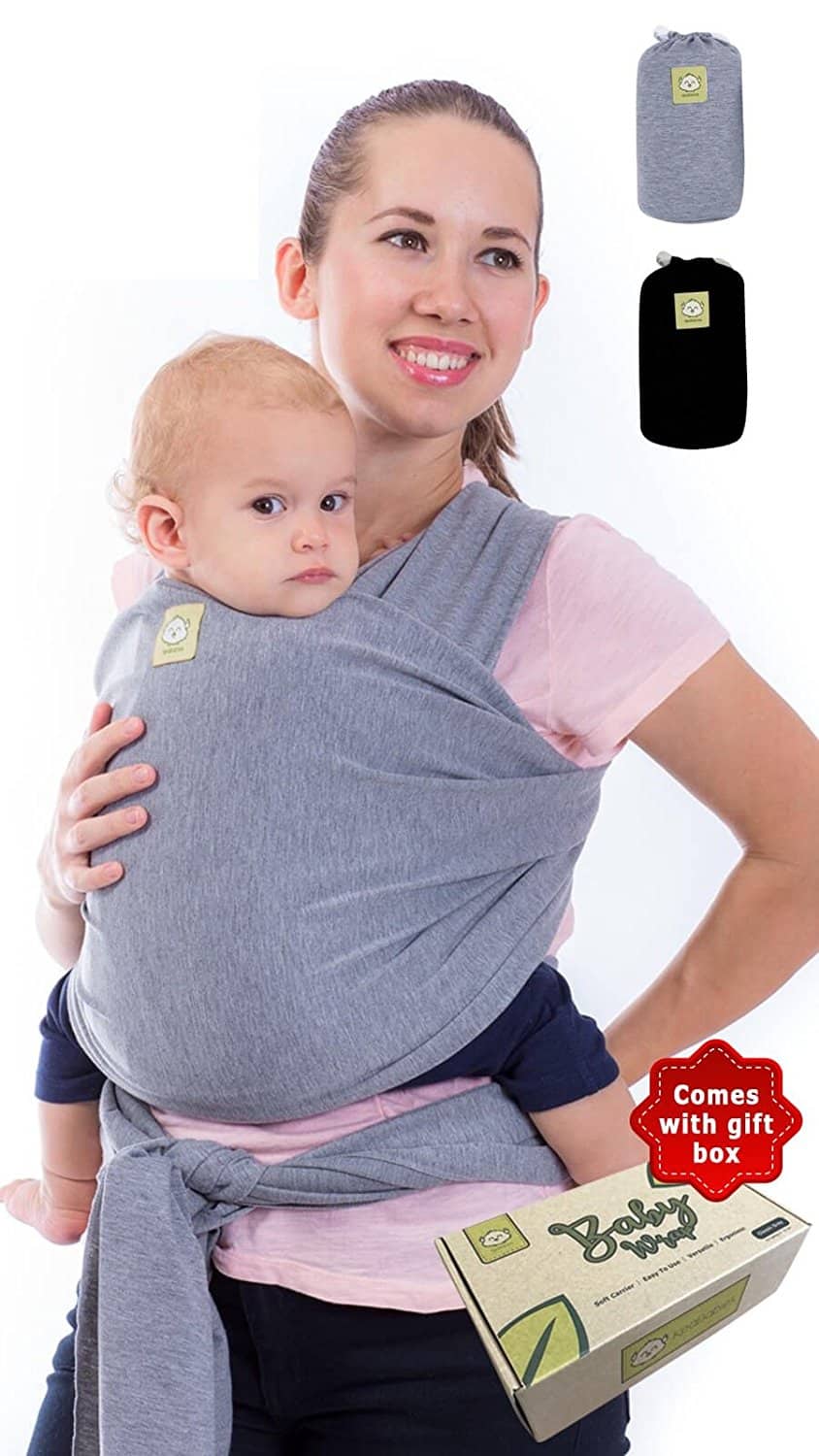

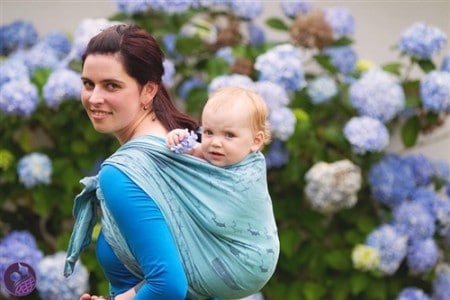

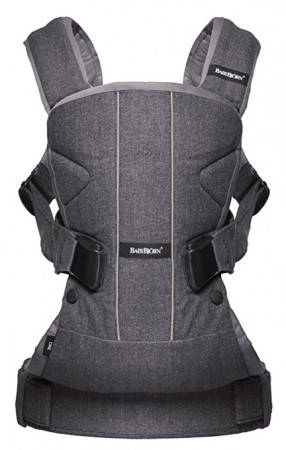
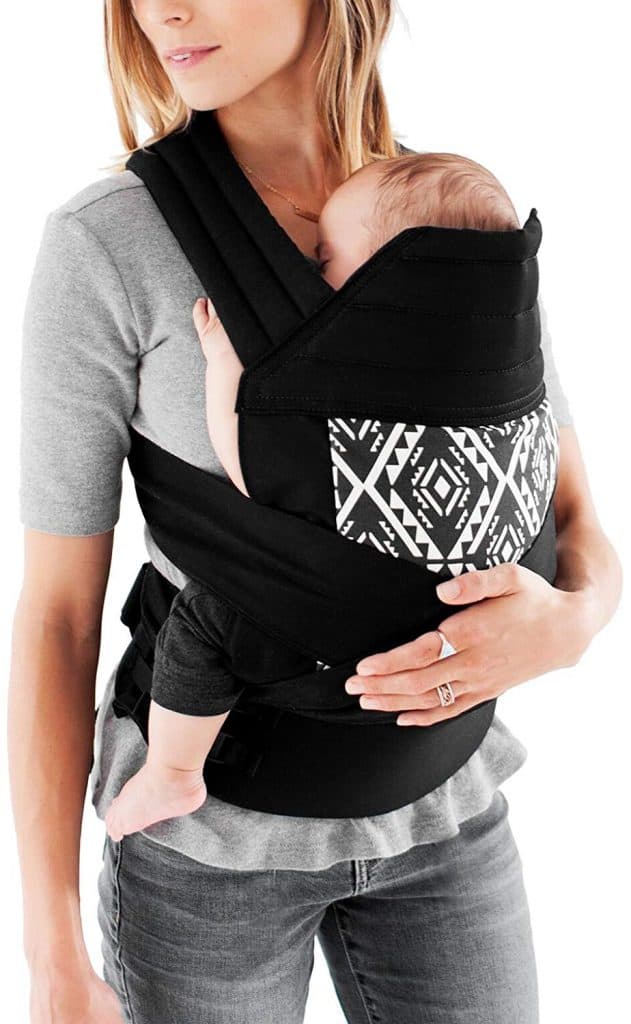

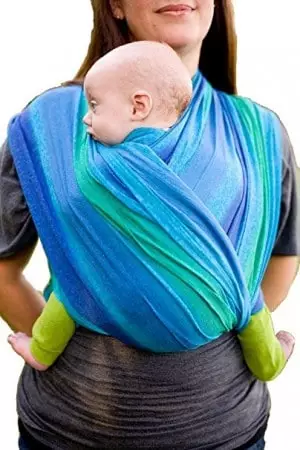
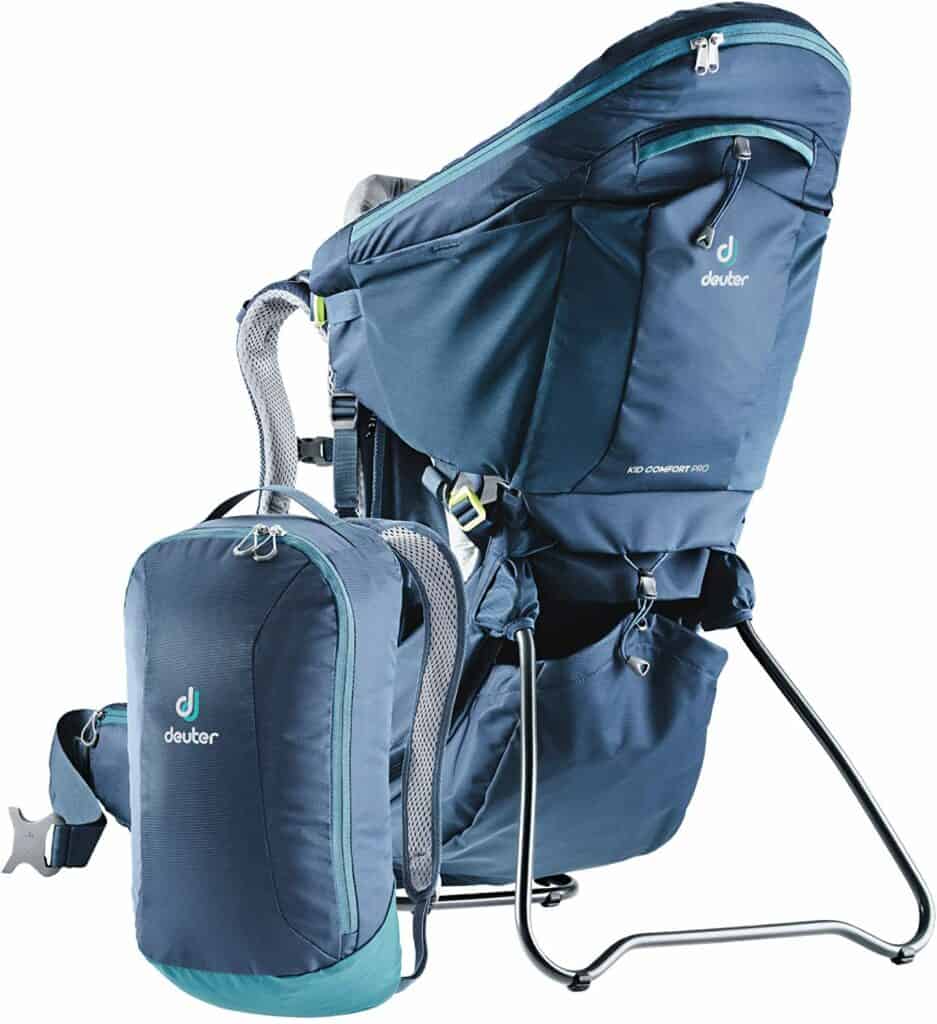

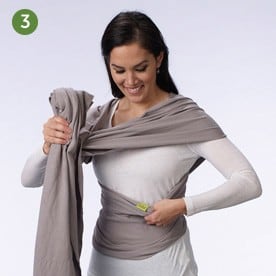

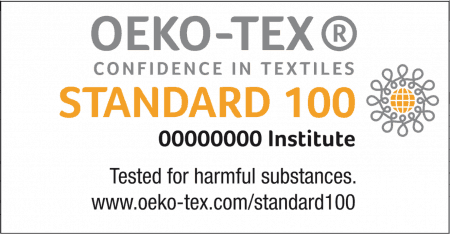
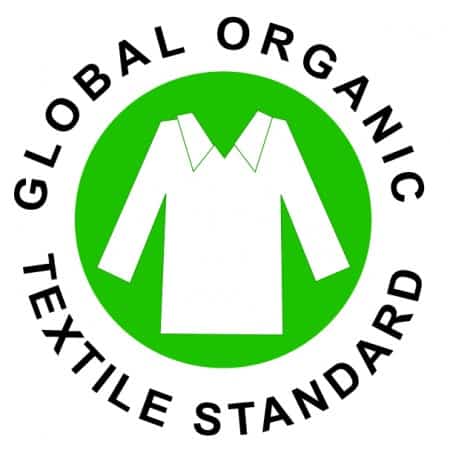

 We obsess over gear for families and the home . . . so you don’t have to. Baby Bargains has one mission: help you find the best gear for your family with unbiased reviews by experts with 20 years of experience. At prices that don’t break the bank. When you purchase a product from links on this site, we make a small affiliate commission. Learn more
We obsess over gear for families and the home . . . so you don’t have to. Baby Bargains has one mission: help you find the best gear for your family with unbiased reviews by experts with 20 years of experience. At prices that don’t break the bank. When you purchase a product from links on this site, we make a small affiliate commission. Learn more 
